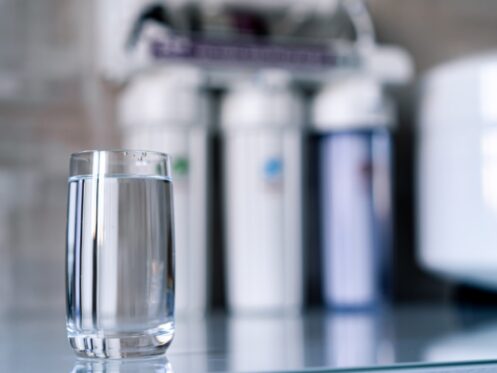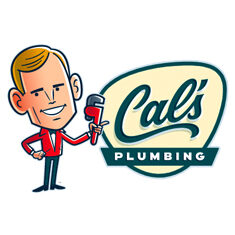Hard water is an issue throughout most of Arizona. It is an especially big issue in certain places such as the Tucson area where the water is considered extremely hard. The problem with hard water is that it contains a high concentration of dissolved minerals, namely calcium and magnesium, some of which get left behind in the form of mineral deposits or limescale. These mineral deposits then cause major problems for pipes, plumbing fixtures and appliances over time, and the only way to prevent it is to install a water softener or water conditioner. In this article, we’ll look at the reasons you should definitely consider installing either one in your home and also explain the differences between the two types of units.
Protecting Your Plumbing and Appliances
Without a water softener, certain appliances like your water heater, washing machine, dishwasher, coffee maker and the ice maker in your refrigerator generally won’t last as long and will often need more repairs. The primary issue is that the mineral deposits that get left behind by hard water end up clogging things up and creating a potential for leaks. You’ll also end up with your showerheads and faucets frequently clogging up and needing to be descaled.
An even bigger issue is that the mineral deposits build up inside your water lines and drain pipes. The deposits then end up choking the pipes off and reducing how much water can flow through them at one time, which leads to issues like slow drains and poor water pressure. At some point, the only way to overcome these issues is to then have the pipes replaced. Having to repipe your home is an especially big undertaking that will take at least a few days and definitely not be cheap.
Preserving the Life of Your Water Heater
Hard water is especially tough on tank water heaters. Even in places with fairly soft water, you always end up with some sediment naturally forming inside the water heater tank as the water gets heated. What happens is that heat causes some of the dissolved calcium to solidify and change into pieces of calcium carbonate that sink down to the bottom of the tank. This sediment layer then interferes with the water heater’s ability to heat as effectively or work as energy efficiently as it should. The sediment also ends up absorbing quite a bit of heat, which creates hot spots that slowly weaken the tank and increase the chances of it eventually leaking. These issues are why all tank water heaters need to be drained and flushed regularly. If you have fairly soft water, you normally only need to flush your water heater tank once a year. In places like Arizona that have much harder water, you’re best to flush your tank at least every six months if not more often. If you don’t, the unit will end up using more energy and have a shorter lifespan than it would otherwise.
Ensuring Your Dishes and Clothes Get Fully Clean
Hard water also creates issues with getting anything fully clean. That includes not only your clothes and dishes but also your skin and hair. The reason is that the minerals in hard water react with certain compounds in soaps, shampoos and detergents to form “soap scum,” which prevents the products from lathering as well as they should. One result is that you need to use more of the product to create a full lather and ensure that everything gets as clean as it should. The mineral deposits also leave spots on your glasses and dishes and tend to make your clean clothes look somewhat dingy and feel stiff. Showering with overly hard water tends to dry out your skin and hair as well and makes some people feel overly itchy.
Water Softener vs. Water Conditioner
The terms water softening and water conditioning are sometimes used interchangeably, but they technically refer to two different processes. You’ll also sometimes hear the two types of units referred to as a salt water softener and a salt-free water softener. However, even the term salt-free water softener is a misnomer since softening means removing the minerals, which isn’t how this type of unit works. A salt-free water softener or water conditioner doesn’t remove any minerals. Instead, it just adds a harmless chemical to the water that keeps the minerals dissolved and suspended so that little to no mineral deposits get left behind. While this helps to protect your plumbing from hard water issues, it doesn’t overcome all of the issues hard water can cause. That primarily means you’ll still have issues with soap and detergent lathering as well and everything getting properly cleaned.
A true water softener uses the process of ion exchange to filter out or remove all of the dissolved minerals from the water flowing through the unit. The way it works is that the softener tank is filled with thousands of tiny resin beads that have a negative charge. All of the calcium and magnesium molecules in hard water are positively charged ions, which means that they get attracted to and create a bond with the resin beads. The result is that all of the minerals get filtered out as the water flows down through the softener tank.
The only issue with this process is that there will eventually be a point where the process stops working since there aren’t enough free resin beads remaining to accept and bond with additional mineral ions. This is where the water softener’s brine tank comes into play. What happens is that the softener tank occasionally gets flushed with the salt brine, which causes the resin beads to let go of the mineral ions so that the minerals then get flushed out of the tank and down a drain.
Water softeners use either sodium chloride or potassium chloride salt pellets or crystals. Both of these chemical compounds are also positively charged and take the place of the mineral ions when the softener tank gets flushed. However, they don’t have as strong of a charge as the mineral ions. That means that after the tank has been flushed, the mineral ions end up taking the place of the salt molecules and binding with the beads. The end result is essentially that all of the calcium and magnesium get removed from the water and replaced with a negligible amount of sodium or potassium salt.
While water softeners are more effective than water conditioners, they also have a few drawbacks. One is that they waste water since the softener tank needs to be flushed fairly frequently. The other concern is over the impact that the salt from water softeners has on the environment, and this concern is why some places have already banned or are considering banning the use of salt water softeners. There is also a slight risk for people on salt-restricted diets, but this isn’t an issue if you use potassium chloride pellets instead of sodium chloride.
With 75+ years of experience, Cal’s Plumbing is the company in Tucson to turn to for all of your plumbing needs. We install and service water softeners, water conditioners and filtration systems, and you can count on our experienced team for expert help if you need any other plumbing, drain or sewer service. To learn more about the water softeners and water conditioners we offer, contact us today.





